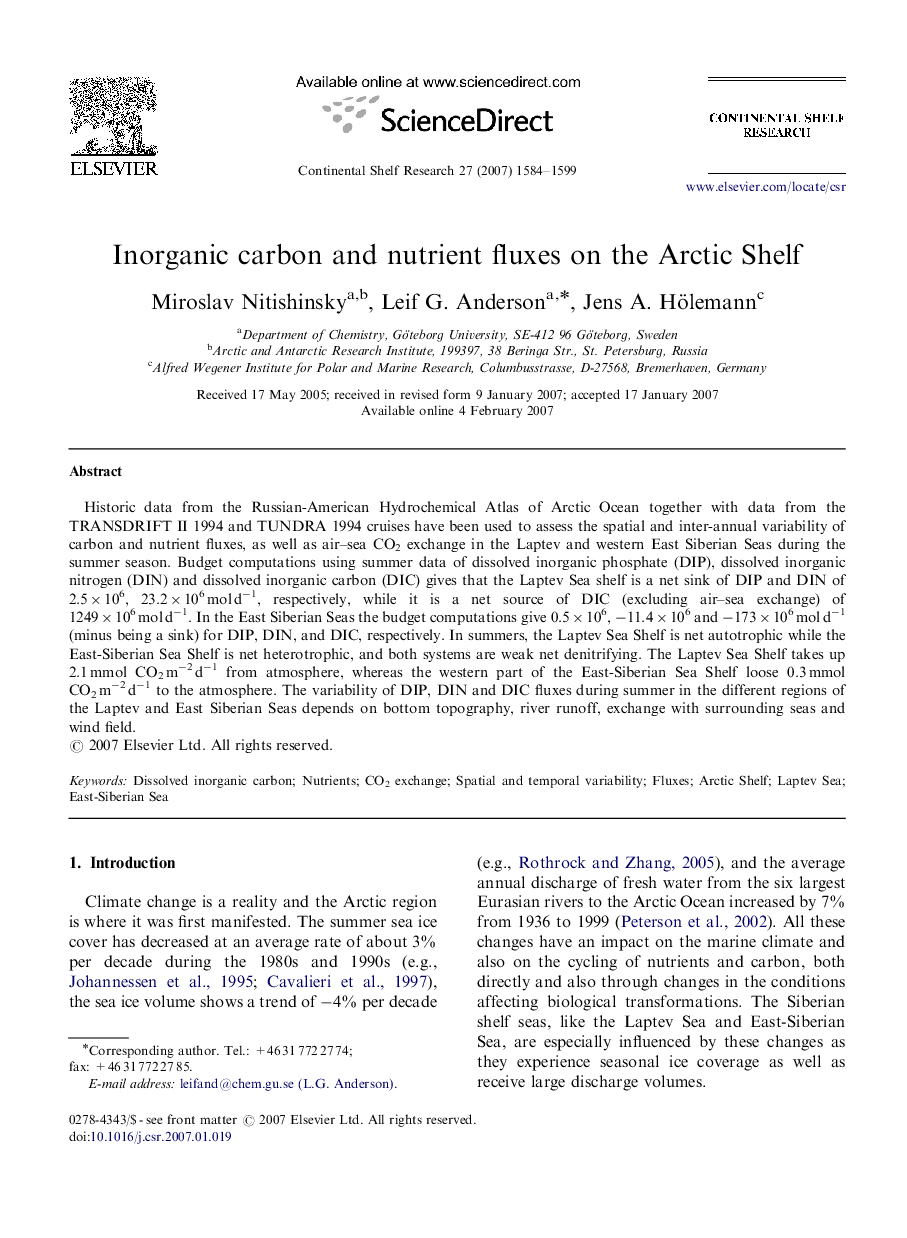| Article ID | Journal | Published Year | Pages | File Type |
|---|---|---|---|---|
| 4533784 | Continental Shelf Research | 2007 | 16 Pages |
Abstract
Historic data from the Russian-American Hydrochemical Atlas of Arctic Ocean together with data from the TRANSDRIFT II 1994 and TUNDRA 1994 cruises have been used to assess the spatial and inter-annual variability of carbon and nutrient fluxes, as well as air-sea CO2 exchange in the Laptev and western East Siberian Seas during the summer season. Budget computations using summer data of dissolved inorganic phosphate (DIP), dissolved inorganic nitrogen (DIN) and dissolved inorganic carbon (DIC) gives that the Laptev Sea shelf is a net sink of DIP and DIN of 2.5Ã106, 23.2Ã106 mol dâ1, respectively, while it is a net source of DIC (excluding air-sea exchange) of 1249Ã106 mol dâ1. In the East Siberian Seas the budget computations give 0.5Ã106, â11.4Ã106 and â173Ã106 mol dâ1 (minus being a sink) for DIP, DIN, and DIC, respectively. In summers, the Laptev Sea Shelf is net autotrophic while the East-Siberian Sea Shelf is net heterotrophic, and both systems are weak net denitrifying. The Laptev Sea Shelf takes up 2.1 mmol CO2 mâ2 dâ1 from atmosphere, whereas the western part of the East-Siberian Sea Shelf loose 0.3 mmol CO2 mâ2 dâ1 to the atmosphere. The variability of DIP, DIN and DIC fluxes during summer in the different regions of the Laptev and East Siberian Seas depends on bottom topography, river runoff, exchange with surrounding seas and wind field.
Keywords
Related Topics
Physical Sciences and Engineering
Earth and Planetary Sciences
Geology
Authors
Miroslav Nitishinsky, Leif G. Anderson, Jens A. Hölemann,
